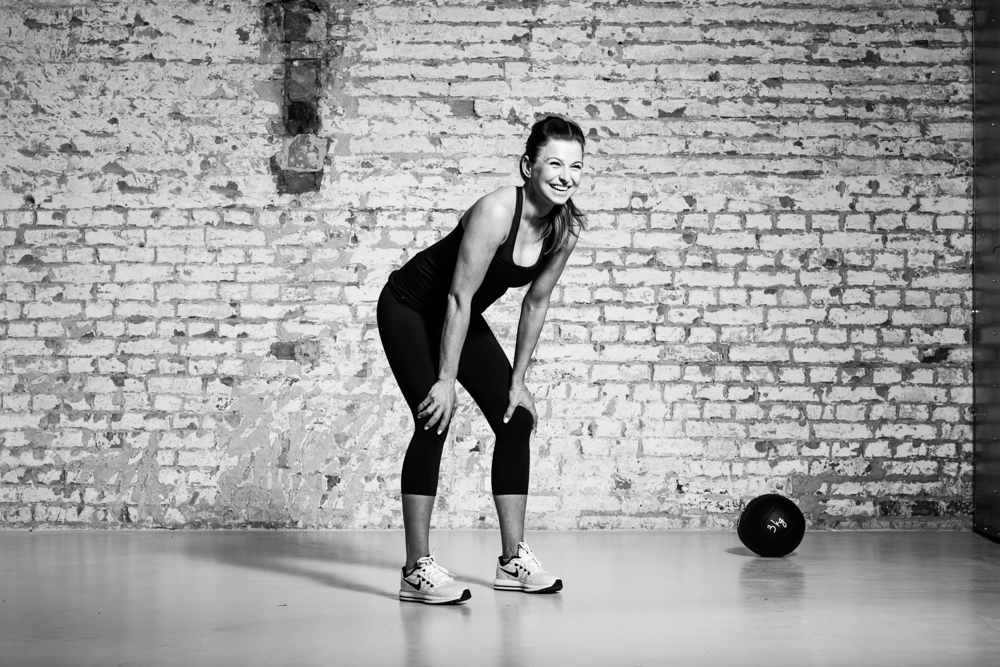
Return to physical activity after child birth. Part 1
When you become a mum, there is not much time to exercise and it is harder to find extra time.
When you become a mum, there is not much time to exercise and it is harder to find extra time. In addition, hormonal changes can make you emotionally overwhelmed, and fatigue. Fatigue can kill your motivation even for short and easy workouts such as walks. Do not expect too much, but do not give up too. Get some support from your partner, family and friends. Physical activity after pregnancy may not be easy, especially in the beginning, but if you find the strength even for a short workout, your well-being will definitely improve significantly. You will feel the energy that is needed for you and your baby, because happy mom equals happy child 🙂
I ALWAYS REPEAT: Do not race anyone, do not compare yourself, and keep a safe distance from the limit of your endurance.
Remember that each body is different, each woman is pregnant differently. Some women are back to being slim shortly after birth, others struggle with unnecessary kilograms for months. Remember that these first quick return to the form it mostly because of the sport activity before, during and after pregnancy.
If you have not trained intensively for years, do not rely on the bodies of sportsmen and trainers. Watch your progress, even if they are small, score results, watch your body, and your desired silhouette will come faster than you think.
ESPECIALLY NOW REMEMBER THAT THERE IS A RIGHT TIME FOR EVERYTHING! REGENERATION AND IMPLEMENTATION OF THE EXERCISE SHOULD BE DONE STEP BY STEP! DONT FORCE ANYTHING!
Going back to the point….
When can you start your training after giving birth?
The American Congress of Obstetricians and Gynecologists (ACOG) is saying that after pregnancy it is good to gradually resume the exercise. It is important that you wait for the green light from your doctor or midwife. It is often recommended that a young mother stop exercising and intensive physical activity for up to six weeks after natural birth and twelve weeks after cesarean section.
If you have exercised during pregnancy and have had a natural birth, you can usually safely carry out light exercises such as walking or basic pelvic floor exercises and stretching your spine within days after the birth. Determine whether everything is in order, let it be, of course you shouldn’t feel any pain during the exercises. If during physical activity you feel good, just be careful not to overdo it. However, if you have not been active during pregnancy or have stopped training in recent weeks, it is a good idea to contact your doctor or midwife before you begin exercising.
What you should pay attention to before you start training after childbirth:
- the course and type of delivery (caesarean section or natural birth)
- healing of postpartum wounds
- condition of the body
Avoid walking to the gym in the first weeks after birth. During this time, your body is exhausted and and you can easily face postpartum complications such as bleeding. I always say that exercises should be implemented very slowly and carefully. If you apply this rule, you will feel the same benefits and you will quickly return to form
The period of puerperium (6 weeks postpartum) is not a contraindication for physical activity and if you are feeling well then you can go back to the minimum doses of training after a few days after natural birth. However, if delivery has taken place through Caesarean section, the minimum activity should begin after approximately 7 days. I am of course speaking of minimal physical activity like vertical positioning, silhouette improvement, pelvic floor muscle exercises, loosening and relieving exercises on your spine. For example, you can start to open your chest wide, roll your shoulders, straighten up. Then gradually add more physical activity. At the very beginning, walks will be better,plus they wlll further oxygenate the body.
DO NOT THINK ABOUT RETURNING TO YOUR FULL TRAINING AND EXERCISING JUST LIKE BEFORE YOUR PREGNANCY
After 6 weeks, after birth and natural birth you can slowly return to physical activity, BUT AFTER GETTING A GREEN LIGHT FROM YOUR DOCTOR. After caesarean section, it is suggested to return to training after about 12 weeks. For starters I propose short workouts, basic exercises involving your body, with more repetition. PLEASE DO NOT LIFT – THIS IS TOO EARLY!
After giving birth, very slowly and carefully approach the training. You are definitely dreaming of returning to the old shapes as soon as possible. Unfortunately, this is not possible right away. Do not suddenly try to get up from the couch and practice intensely as before pregnancy! It’s not the time – take care of your baby and think about your regeneration. If you feel energetic, slowly and successively you can add exercises, lengthen each workout by a few minutes and increase the number of repetitions and weight. First of all, during the first weeks after birth, do not overload the abdominal muscles.
The Department of Health suggests taking about 150 minutes of moderate intensity training in a week, preferably spread over several days. For starters, however, the best will be quiet walks, which will additionally oxygenate our body and will cause a sense of relaxation. Many recreational centers, gyms and yoga studios offer exercise classes for new mums. You can also try stretching, but be careful with the crotch! Here I propose to focus on the spine.
Advantages and disadvantages of postpartum exercise
This is very important, so I will repeat it again – postnatal exercises must be safe and should not overload our body. You need to properly hydrate, eat and gradually increase the intensity of exercise.
The advantages of postpartum exercise are:
- faster return to pre-pregnancy condition
- pelvic floor muscle strengthening
- improved mood
- Discharge of stress, which is not indicated even during breastfeeding
- more energy to act
Starting too early an intense postpartum exercises can cause:
- worsening of postpartum haemorrhage (increased bleeding intensity or blood changes to light red – it is necessary to contact your gynecologist)
- various types of postpartum complications
- opening of postpartum wounds
- joint and muscle pain
Slow down or discontinue the exercise if you:
- Feel exhausted instead of being animated
- Your muscles are tired and you feel pain for a very long time after your workout
- During exercise you tremble muscles
- Your heart rate rises by more than 10 beats per minute above. I suggest checking your morning pulse as a health indicator
ALWAYS LISTEN TO YOUR BODY!
For the first few months after birth, your body needs time to recover and you need time to adjust to your new role – being a mom :).
If you are returning to training, do not forget to rest. I know it’s often impossible because of many new responsibilities, but even a 15-minute nap together with a baby will much faster rebuild your body.
Do I have to be careful when exercising my abdominal muscles after giving birth?
I wrote about it on my blog HERE.
When a woman is pregnant and her body changes, there is muscle distortion and the middle line of the abdomen appears, which is more visible, the greater the tendency of the muscular bunches. It is then that you stretch the connection between the muscles, the so-called linea alba, which is normally narrow and becomes wide only during pregnancy, hence the muscles are pushed to the side.
Linea alba in addition to aesthetic defects has a negative impact on our health and well-being. Muscular dislocation covers the front wall of the abdomen, but also its lateral muscles. Because they do not have the right voltage, they are not able to work properly. This results in back pain, difficulties in maintaining a simple posture, the appearance of umbilical hernia and many other difficulties in everyday life, such as the problem of stopping the urine after delivery and return to form.
Therefore, I repeat – BE UNDERSTANDING FOR YOUR ABDOMINAL MUSCLES AND GIVE THEM SOME TIME. Try not to do many sit-ups, supports, and even more exercises on the abdominal muscles.
So when to start training your abdominal muscles?
Just like with the other body parts, you can start your abdominal training from 6-8 weeks after birth and 12 weeks after cesarean section – after consultation with a gynecologist or midwife. You can also check yourself at home whether your muscles are ready to fight and workout after pregnancy.
It has been proven that women who were physically active before pregnancy and did involve abdominal muscles and deep muscles in the training did not have problems with abdominal muscular dystrophy after delivery.
How to check if you are ready to start exercises?
Lie on your back in a comfortable position, bend your legs in the knee and hip joint, support feet on the ground (as pictured). Place your hands on your belly, along the linea alba, and gently move your head towards your chest. Take a breath and exhale.
If you sense that the 3 fingers between the muscles collapse into the abdomen, then there is a dislocation of the simple muscles. It is not yet the time to start your abdominal workout. Wait, and maybe you can go to a physiotherapist for advice. In this case, intensive exercise of the abdominal muscles can cause additional dislocation, which will prolong the return of your muscles to pre-pregnancy (in extreme cases, pregnancy-induced changes may be irreversible)
Personal trainer, is always a good help!
Ask your personal trainer to show you gentler versions of abdominal exercises and implement them very slowly into your training plan.
Well-chosen abdominal muscle exercises postpartum should minimize stress in the lower back and midline (the middle of the abdomen runs vertically from the sternum to the pelvis).
Breastfeeding and sport:
Exercises that you do will not have a significant effect on the amount or composition of milk, but breastfeeding women should avoid exercise that causes breast pain. Make sure you have a well-chosen sports bra.
Women who are breastfeeding should be especially careful about the exhaustive exercise. There are studies that suggest that excessive exercise leads to the accumulation of lactic acid in the milk, which makes it bitter in taste. This may worsen the child’s appetite. Of course, it is only one of the tests.
Remember Dear Mom, that:
During breast-feeding, constant weight control of the baby is required. Fast weight loss can be caused by a decrease in the amount of food due to your over-intensive workout. You may think that you are practicing the same intensity as before, but the tolerance of the body is different when you are breast-feeding. Then return to the minimum physical activity and observe your body. In addition, try to feed the baby before training
Feeding immediately after training / running is not harmful to the baby, although the milk may contain lactic acid (according to some studies). However, it should be remembered that after about an hour its concentration returns to a pre-workout state. Remember about hygiene. Thoroughly wash the breasts (as well as the whole body) before feeding after training. Alternatively, exercise first, then go to the shower, drop a few milliliters of milk, and after 30 or 60 minutes feed the baby.
And now the most frequently asked question:
What to do to lose weight quickly after pregnancy?
Chill, clear your head to start with!
Then physical activity – the best way to lose weight is to do aerobic exercise that will increase your heart rate. Think about swimming, walking or running.
Remember – Do not lose more than a kilo per week, especially if you are breastfeeding.
Are you asking me if my Diet by Ann diet is suitable for breastfeeding women? – Unfortunately not. I invite you to use it at the end of this period.
You should increase your caloric intake by about 500 calories (more than in the third trimester of pregnancy). Starting a diet too early after birth can affect mood and energy, and the quantity and quality of milk.
Be patient and give yourself time. You will be surprised at how much weight you will lose by breastfeeding and healthy eating without using diet, cutting calories and intense workouts.
I present you with some safe exercises that you can start first after childbirth, focusing primarily on strengthening the pelvic floor.
- Start with something small and simple – for example, a daily walk. If you need a company that will motivate you, try to find a class of young moms and postnatal exercises in a local gym.
2. If you get permission from your doctor to start workouts, consider especially these:
Pelvic tilt – try pelvic tilt several times a day to strengthen your abdominal muscles. Lie on your back on the floor with your knees bent. Flatten your back on the floor by straining your abdominal muscles and bend slightly to the pelvis. Hold for 10 seconds. Repeat five times and do 10 to 20 repetitions.
3. Kegel Exercises – Use this exercise to recreate the pelvic floor muscles that support the uterus, bladder, small intestine and anus. Tighten the pelvic floor muscles as if you were trying to stop urinating. Hold for 10 seconds and release, relaxing for 10 seconds between contractions. Make at least three sets of 10 repetitions a day. Avoid Kegel exercises during urination.
Remember that your workouts will bring you many benefits, but treat them as a way to relax and enjoy. When you are a young mom, peace of mind will bring you more joy and satisfaction than the slim figure.



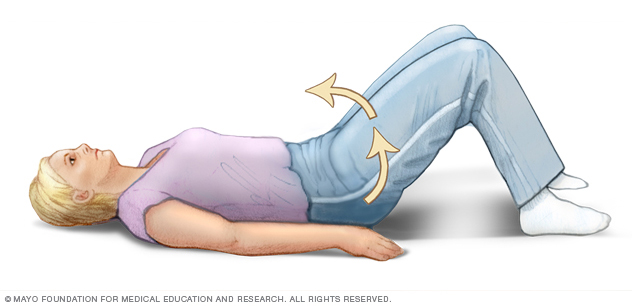

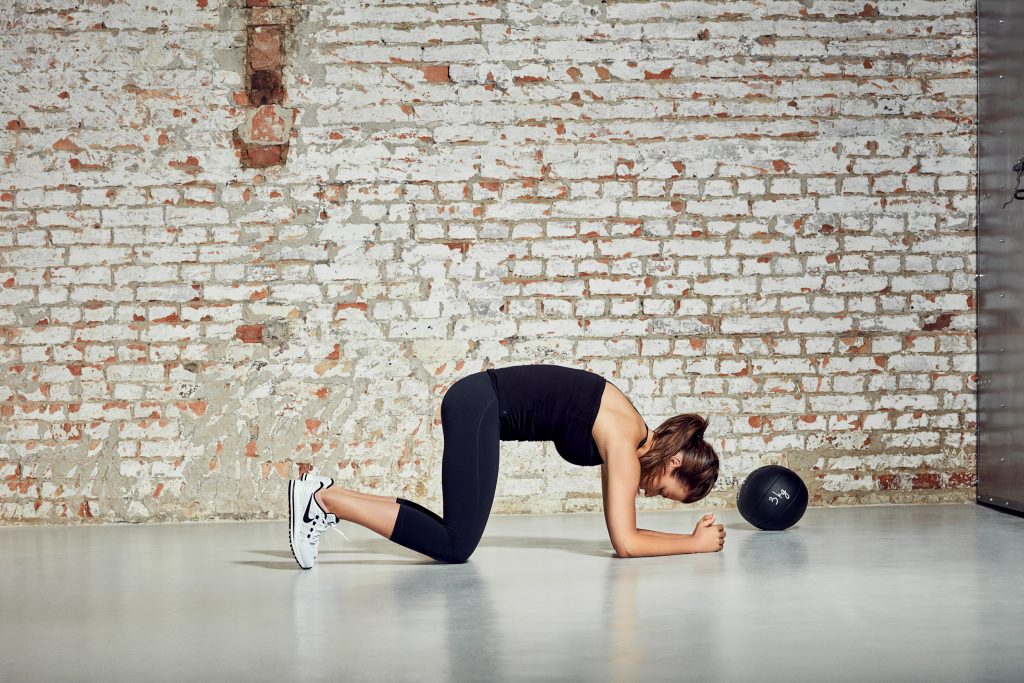
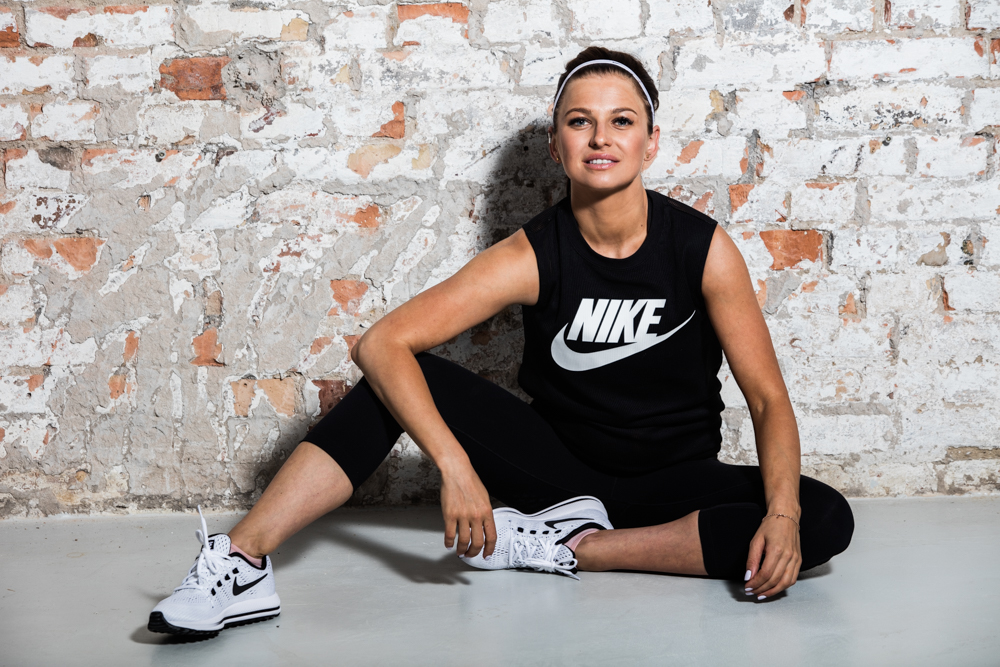



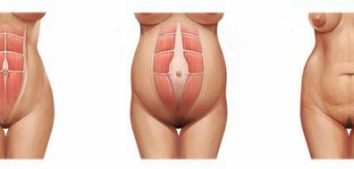


Comments No Comments
Join the discussion…